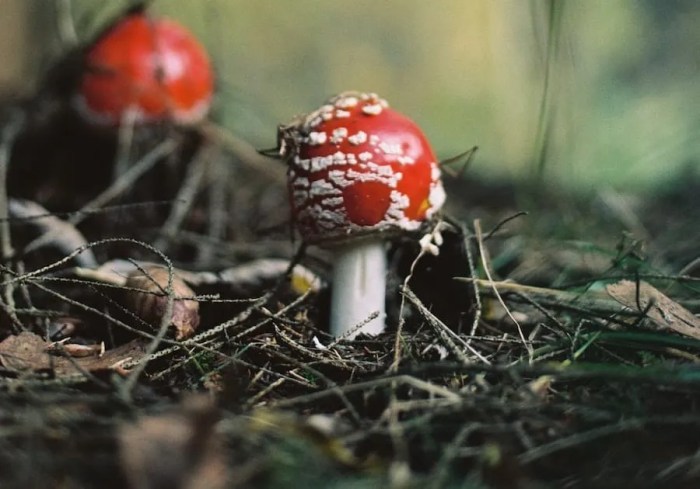
Delving into the enigmatic realm of psilocybin mushrooms, a fundamental question arises: how long does it take for shrooms to kick in? Embark on a journey of exploration as we unravel the intricacies of this fascinating topic, deciphering the factors that govern the onset, peak, and duration of shroom-induced experiences.
From understanding the influence of mushroom type, dosage, and individual metabolism to examining the impact of consumption methods and environmental conditions, this comprehensive guide provides a thorough understanding of the timeline associated with shroom intake.
Factors Affecting Shroom Intake Onset: How Long Does It Take For Shrooms To Kick In
The onset time of shrooms can vary widely depending on several factors, including the type of mushroom, the dosage consumed, and the individual’s metabolism.
Mushroom Type
Different species of psilocybin mushrooms contain varying levels of active compounds, which can affect the speed of onset. For instance, Psilocybe cubensis, a common species, typically takes around 30-60 minutes to kick in, while Psilocybe cyanescens, a more potent variety, may take up to 2 hours.
Dosage
The amount of shrooms consumed directly influences the onset time. Higher doses tend to take effect more quickly, while lower doses may take longer to produce noticeable effects.
Individual Metabolism
Each individual’s metabolism plays a role in how quickly shrooms are processed by the body. Factors like age, weight, and overall health can affect the rate of absorption and onset time.
Consumption Method
The method of consumption can also impact the onset time. Eating raw shrooms typically takes longer to take effect (60-90 minutes) compared to making tea (30-60 minutes) or using capsules (15-30 minutes).
Environmental Conditions
Environmental conditions, such as temperature and humidity, can influence the speed of onset. Warmer temperatures and higher humidity tend to accelerate the absorption process, while colder temperatures and lower humidity can slow it down.
Shrooms, also known as magic mushrooms, contain psilocybin, a psychedelic compound that can produce intense visual and auditory hallucinations. The onset of these effects, often referred to as “the trip,” can vary depending on several factors, including the dosage, method of ingestion, and individual metabolism.
For more information on how long it takes for shrooms to kick in, check out this article . The article provides a detailed overview of the factors that influence the onset and duration of the effects of shrooms.
Typical Timeframes for Shroom Effects

The onset, peak, and duration of shroom effects can vary depending on several factors, including the type of mushroom, dosage, and individual metabolism. Generally, the effects of shrooms begin within 30-60 minutes of ingestion, peak within 2-3 hours, and gradually subside over the next 4-6 hours.
Variations in Onset Time Based on Mushroom Type
Different types of mushrooms contain varying amounts of psilocybin, the psychoactive compound responsible for the psychedelic effects. This variation in psilocybin content can affect the onset time of the effects. For instance:
-
-*Psilocybe cubensis
These commonly cultivated mushrooms typically produce effects within 30-60 minutes.
-*Psilocybe mexicana
The onset time for shrooms can vary depending on several factors, but typically it takes about 30-60 minutes. If you’re in the Bay Area and looking for a place to connect with nature while you wait, consider visiting Santa Clara University.
Their campus is home to beautiful gardens and trails, perfect for a leisurely walk or picnic. After your visit, you’ll be well-rested and ready to experience the full effects of your shroom journey.
Known for their potency, these mushrooms may have an onset time as short as 15-30 minutes.
-*Psilocybe semilanceata
These potent mushrooms are often found in Europe and have an onset time of around 15-45 minutes.
Subjective Experiences and Variability
The subjective nature of shroom experiences can vary greatly from person to person. Factors such as mood, expectations, and surroundings can influence the intensity and duration of effects.
The concept of “set and setting” plays a significant role in shaping the experience. Set refers to the individual’s mindset and emotional state, while setting refers to the physical and social environment in which the experience takes place. A positive set and setting can enhance the experience, while a negative one can lead to anxiety or discomfort.
Mood
Mood can significantly impact the onset time and intensity of shroom effects. Positive emotions like happiness and excitement can accelerate the onset and enhance the overall experience. Conversely, negative emotions like anxiety or fear can delay the onset and lead to a more challenging experience.
Curious about how long it takes for shrooms to kick in? This article dives into the factors that influence the onset time of shrooms, from dosage to individual metabolism. By understanding these variables, you can better anticipate the effects and plan your experience accordingly.
Expectations
Expectations can also influence the onset time and intensity of effects. Individuals who have positive expectations about the experience may experience a quicker onset and more enjoyable effects. Conversely, those with negative expectations may experience a delayed onset and more challenging effects.
If you’re curious about how long it takes for shrooms to kick in, you’re not alone. Many people wonder about this, and the answer can vary depending on a number of factors. For more information on how long does it take for shrooms to kick in , check out this article.
It provides a comprehensive overview of the topic, including how long it takes for shrooms to kick in on average, as well as factors that can affect the onset time.
Surroundings, How long does it take for shrooms to kick in
The physical and social environment in which the experience takes place can also affect the onset time and intensity of effects. A comfortable and safe setting can promote a positive experience, while an unfamiliar or stressful environment can lead to anxiety and discomfort, potentially delaying the onset or altering the intensity of the effects.
Safety Considerations and Precautions

Responsible use of shrooms is crucial due to their potential risks. Proper dosage and preparation can minimize negative experiences. Interactions with other substances, such as medications and alcohol, should be considered.
Dosage
Dosage is crucial. Start with a low dose and gradually increase as needed. Consider your experience level, body weight, and individual sensitivity.
Preparation
Proper preparation includes ensuring a safe and comfortable setting. Have a trusted companion present, and avoid mixing shrooms with other substances.
Wondering how long it takes for shrooms to kick in? It varies depending on factors like dosage and individual metabolism. Generally, effects start within 20-40 minutes, peaking around 2-3 hours after ingestion. Check out this article how long does it take for shrooms to kick in for more details on timing and other aspects of the shroom experience.
Interactions
Shrooms can interact with certain medications, including antidepressants and antipsychotics. Avoid alcohol as it can intensify shroom effects.
The time it takes for shrooms to kick in can vary depending on several factors. For more information on how long does it take for shrooms to kick in, check out this article: how long does it take for shrooms to kick in . Knowing how long does it take for shrooms to kick in can help you plan your trip accordingly.
Legal and Ethical Implications
The legal status of shrooms varies widely around the world. In some jurisdictions, they are completely illegal, while in others, they are decriminalized or even legalized. The penalties for possession or use can range from fines to imprisonment, depending on the jurisdiction and the amount of shrooms involved.
There are also ethical considerations surrounding shroom use. Some people believe that it is wrong to use shrooms because they can lead to addiction or mental health problems. Others believe that shrooms can be used responsibly and can have positive effects on mental health and well-being.
Respect for Traditional Practices
It is important to be respectful of traditional practices involving shrooms. In some cultures, shrooms have been used for centuries for religious or spiritual purposes. It is important to understand and respect these traditions when using shrooms.
Responsible Drug Policy
It is also important to support responsible drug policy. This means taking into account the risks and benefits of shroom use and making decisions that are based on evidence and compassion. It also means supporting policies that reduce the harms associated with shroom use, such as harm reduction programs and drug courts.
Resources
- National Institute on Drug Abuse: https://www.drugabuse.gov/publications/drugfacts/hallucinogens
- Multidisciplinary Association for Psychedelic Studies (MAPS): https://maps.org/
- Zendo Project: https://zendoproject.org/
Closing Summary

Navigating the world of shrooms requires a blend of knowledge and respect. By delving into the complexities of onset time, we empower individuals to make informed decisions, ensuring safe and meaningful experiences. Remember, the journey with shrooms is as unique as the individuals who embark upon it, and embracing this variability enhances the overall experience.
Quick FAQs
What factors influence the onset time of shrooms?
Mushroom type, dosage, individual metabolism, consumption method, and environmental conditions all play a role in determining how long it takes for shrooms to kick in.
How long does it typically take for shrooms to kick in?
Onset times can vary widely, but generally, the effects of shrooms begin within 30-60 minutes after ingestion, peaking within 2-4 hours and lasting for several hours.
Can the onset time be accelerated or delayed?
Consuming shrooms on an empty stomach can speed up the onset, while eating a meal beforehand can delay it. Additionally, factors like metabolism and individual sensitivity can influence the rate of absorption.





